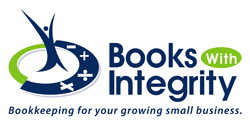Do You Need To Use QuickBooks' Fixed Asset Tools?
by Sandra Emanuel on 05/19/14
Do You Need
to Use QuickBooks' Fixed Asset Tools? The Basics
Managing your company’s fixed assets is a complicated process, one that
will require some extra assistance.
Much of the work you do in QuickBooks is short-term. You
send an invoice and it gets paid. Your purchase order is fulfilled, and the
products move into your inventory. You run payrolls and submit their related
taxes and other payments.
Managing the life cycle of your fixed assets
is an exception. Simply, fixed assets are physical entities that you purchase
to help your business generate revenue, like property, a vehicle or a
commercial oven. By definition, they must be in use for over 12 months.

Figure 1: You’ll need our help in depreciating the book value of your fixed assets, but careful recording of them will make your QuickBooks reports, your taxes and your company’s worth more accurate.
QuickBooks can help you track these, but both the value of
your company and your tax obligations – and the sale price, should you
eventually sell them -- are affected by how the book value of your fixed assets
is depreciated. It’s important that you work closely with us over the life of
each one. What you can do
on your own, though, is to maintain absolutely accurate records in this area.
Two Paths
The best time to start recording information about a fixed
asset is while you’re creating a transaction related to its purchase. You can
build an item record for it as you’re filling out the Item section of Enter Bills, Write Checks, Enter
Credit Card Charges or Purchase Order.
Let’s say you’re writing a check for a new company truck.
You’d go to Banking |
Write Checks and fill in the blanks. Click the Items tab below the MEMO field, then click
the down arrow in the ITEM
field.
Scroll up to the top of the list if necessary and select <Add New>. You’ll
see this menu:

Figure 2: Keep track of your company’s fixed assets by creating item records for them. You can do this as you’re entering transactions for their purchase.
Click on Fixed
Asset to open the New
Item window.
Transactions
Not Required
There may be times when you’ll want to create an item record
for a fixed asset when you’re not processing a transaction. Such situations
include:
·
Cash purchases
·
Transfer of a personal asset to your
company
·
Purchase of a fixed asset with personal
funds, or
·
A multi-item purchase.
To do this, click on the Lists menu and select Fixed Asset Item List. If
you’re adding a new one, right-click anywhere in the list part of the screen
and select New
(or click the down arrow next to the Item
button
in the lower left of the screen and click New).
The same New Item window
that you opened from the check-writing screen appears.
You’ve already chosen Fixed
Asset as the TYPE,
so your cursor should be in the Asset
Name/Number field. Enter an easy-to-recognize name so that you’ll be
able to quickly identify it in reports. Select the correct Asset Account (ask
us if you’re not sure) and type a description in the Purchase Description field,
clicking the correct button for new
or
used.
Enter the Date
purchased, the Cost and
the Vendor/Payee. Don’t
worry about the SALES
INFORMATION fields until – and if – you eventually sell the asset.

Figure 3: You should be able to complete the New Item window in QuickBooks for your fixed assets on your own, but consult with us on any questions.
Under ASSET
INFORMATION, enter the Asset
Description (you can write a lengthier description here), its Location, PO Number if
applicable, Serial Number
and
warranty expiration date. Add Notes
if you’d like, and you’re done – unless you want to incorporate Custom Fields. If
so, click the Custom
Fields button in the upper right, then Define Fields.
(We can provide the depreciation and book value numbers
under FIXED ASSET MANAGER.)
Your fixed asset records are critical elements of
QuickBooks. You may be storing similar information elsewhere in your office
records, but QuickBooks needs it, too, so you’ll have a comprehensive
accounting of your company’s value.









